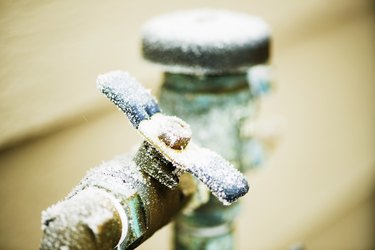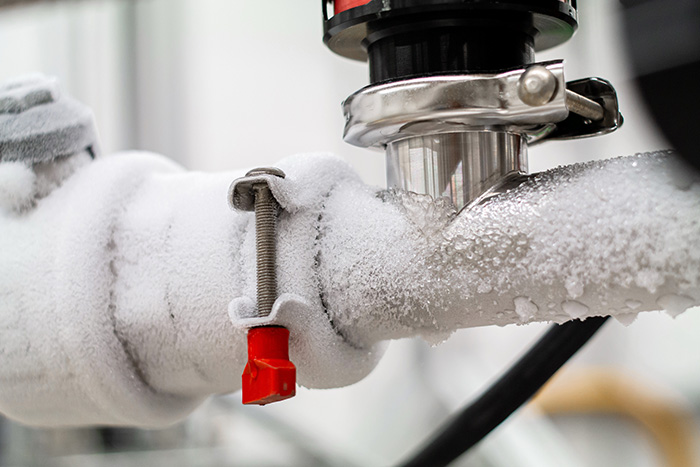Everybody has their unique piece of advice with regards to Winter Plumbing Precautions: Preventing Frozen Pipes.

Cold weather can wreak havoc on your pipes, especially by freezing pipes. Here's just how to stop it from taking place and what to do if it does.
Introduction
As temperature levels drop, the risk of icy pipelines increases, potentially bring about pricey fixings and water damages. Comprehending how to avoid icy pipes is vital for home owners in cold climates.
Avoidance Tips
Protecting vulnerable pipes
Cover pipes in insulation sleeves or make use of heat tape to shield them from freezing temperatures. Focus on pipelines in unheated or exterior locations of the home.
Home heating strategies
Keep indoor areas effectively heated up, specifically areas with plumbing. Open cupboard doors to allow cozy air to distribute around pipelines under sinks.
Just how to determine icy pipes
Try to find reduced water circulation from taps, unusual odors or noises from pipes, and visible frost on exposed pipelines.
Long-Term Solutions
Structural adjustments
Take into consideration rerouting pipelines away from outside wall surfaces or unheated areas. Include added insulation to attic rooms, basements, and crawl spaces.
Upgrading insulation
Purchase high-quality insulation for pipelines, attic rooms, and wall surfaces. Proper insulation helps maintain consistent temperature levels and reduces the risk of frozen pipelines.
Protecting Outdoor Pipes
Yard tubes and outdoor taps
Detach and drain yard pipes prior to winter season. Install frost-proof faucets or cover outside taps with shielded caps.
Comprehending Icy Pipelines
What causes pipes to ice up?
Pipelines ice up when subjected to temperature levels below 32 ° F (0 ° C) for expanded durations. As water inside the pipes freezes, it broadens, putting pressure on the pipeline wall surfaces and potentially triggering them to break.
Threats and problems
Frozen pipes can lead to supply of water disruptions, home damages, and costly repairs. Ruptured pipes can flooding homes and cause considerable architectural damages.
Signs of Frozen Water Lines
Identifying icy pipes early can prevent them from rupturing.
What to Do If Your Pipelines Freeze
Immediate activities to take
If you presume frozen pipes, maintain faucets open up to relieve pressure as the ice thaws. Make use of a hairdryer or towels soaked in hot water to thaw pipes gradually.
Final thought
Avoiding icy pipes requires aggressive procedures and fast responses. By understanding the causes, indications, and safety nets, property owners can protect their plumbing throughout winter.
5 Ways to Prevent Frozen Pipes
Drain Outdoor Faucets and Disconnect Hoses
First, close the shut-off valve that controls the flow of water in the pipe to your outdoor faucet. Then, head outside to disconnect and drain your hose and open the outdoor faucet to allow the water to completely drain out of the line. Turn off the faucet when done. Finally, head back to the shut-off valve and drain the remaining water inside the pipe into a bucket or container. Additionally, if you have a home irrigation system, you should consider hiring an expert to clear the system of water each year.
Insulate Pipes
One of the best and most cost-effective methods for preventing frozen water pipes is to wrap your pipes with insulation. This is especially important for areas in your home that aren’t exposed to heat, such as an attic. We suggest using foam sleeves, which can typically be found at your local hardware store.
Keep Heat Running at 65
Your pipes are located inside your walls, and the temperature there is much colder than the rest of the house. To prevent your pipes from freezing, The Insurance Information Institute suggests that you keep your home heated to at least 65 degrees, even when traveling. You may want to invest in smart devices that can keep an eye on the temperature in your home while you’re away.
Leave Water Dripping
Moving water — even a small trickle — can prevent ice from forming inside your pipes. When freezing temps are imminent, start a drip of water from all faucets that serve exposed pipes. Leaving a few faucets running will also help relieve pressure inside the pipes and help prevent a rupture if the water inside freezes.
Open Cupboard Doors
Warm your kitchen and bathroom pipes by opening cupboards and vanities. You should also leave your interior doors ajar to help warm air circulate evenly throughout your home.

Do you like reading about Preventing and dealing with frozen pipes? Post a remark down the page. We would be delighted to listen to your suggestions about this blog posting. We are looking forward that you come back again later on. Appreciated our review? Please quickly share it. Let somebody else find it. I praise you for your time. Revisit us soon.
Explore Now
Comments on “How to Defend Your Pipes from Cold Weather: Professional Guidance”